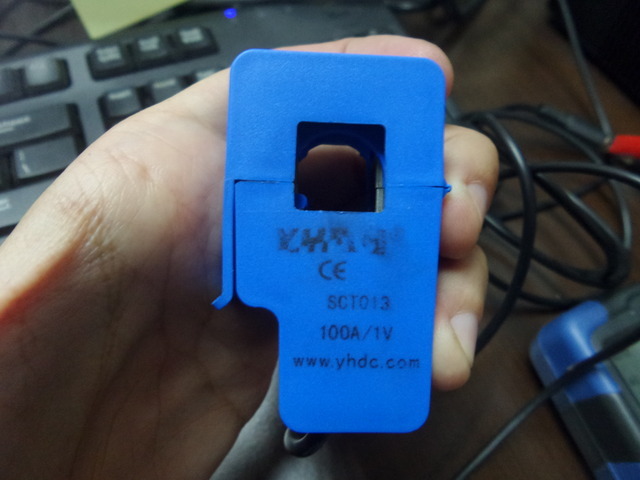Good day ladies and gentlemen,
I am a newbie in this group and also new with Arduino. Since 2 weeks ago, I have spent my time to build an electricity data logger for my study in college.
At this moment, I have no 240V AC to 9V AC adapter, so I decided only to use the SCT-013-000 sensor to get the current value based on the diagram in the link below:
CT sensors - Interfacing with an Arduino
While reading the content in this link, I noticed the following phrase:
If the CT sensor is a “current output” type such as the YHDC SCT-013-000, the current signal needs to be converted to a voltage signal with a burden resistor. If it is a voltage output CT you can skip this step and leave out the burden resistor, as the burden resistor is built into the CT.
The SCT-013-000 that I bought is printed (on the sensor itself) with information saying that the sensor produces output = 1V when the input is 100A. Based on my understanding, this means that the SCT-013-000 that I have is voltage output CT, NOT current output CT. Therefore, I conclude that I don’t have to use a burden resistor for my voltage output CT, as mentioned in the previous link.
I tried to double-check about this on the manufacturer’s website on the following link:
100A Split core current transformer SCT-013
There is the data sheet for SCT-013-000 in this link. Inside the datasheet, I found the schematic diagram for both current output type and voltage output type. Based on my understanding of the schematic diagram, the current output type is equipped with TVS diodes while the voltage type is equipped with TVS resistor, am I right? Therefore, I can omit the burden resistor for my situation because TVS resistor in my SCT-013-000 acts as burden resistor, right?
If my assumption about I don’t have to use burden resistor is correct, then the estimated value for the TVS resistor is calculated below:
There are 2000 output coils in SCT-013-000. If the input current, Ii is 100A, therefore Ii x Ni = Io x No, hence output current, Io = Ii x Ni/No = 100A x 1/2000 = 0.05A
If the input current 100A produces produces 0.05A and 1V at the output, that means the TVS resistor, Rtvs = Vo/Io = 1V/0.05A = 20Ω
I tried to use multimeter to read the value of resistance between the output terminals of my SCT-013-000 and obtained the value 16.6Ω. However, I think this measuring method is not accurate because the TVS resistor is connected in parallel with the 2000 output coils of my SCT-013-000. If the multimeter supply DC current/voltage to measure the value of resistor, the 2000 output coils will behave like an inductor supplied with DC current/voltage, which is a short circuit. Dismantling the SCT-013-000 just to disconnect the TVS resistor from the 2000 coils will damage the sensor. Therefore, at this moment I decided to stick with the TVS resistor = 20Ω, which is estimated and explained in the previous paragraph.
I use the code below for my Arduino UNO kit, which is downloaded from Open Energy Monitor website:
// EmonLibrary examples openenergymonitor.org, Licence GNU GPL V3
#include “EmonLib.h” // Include Emon Library
EnergyMonitor emon1; // Create an instance
void setup()
{
Serial.begin(9600);
emon1.current(1, 111.1); // Current: input pin, calibration.
}
void loop()
{
double Irms = emon1.calcIrms(1480); // Calculate Irms only
Serial.print(Irms*230.0); // Apparent power
Serial.print(" ");
Serial.println(Irms); // Irms
}
In one of the replies above, I noticed that Mr. Robert.Wall said that the value of the calibration constant should be near to the burden resistor value. Does this means that I should also revise my calibration value in the script above from 111.1 to 20 for my case?
Long story short, I would like to double check the following 2 things:
- I don’t have to use burden resistor because the SCT-013-000 that I have is voltage output type that comes together with TVS resistor.
- I have to revise my calibration constant in the code above from 111.1 to 20 if it is estimated that the value of TVS resistor for my SCT-013-000 is 20Ω
Thank you very much and have a nice day.
 Did I get that right?
Did I get that right?

